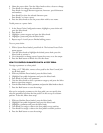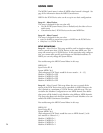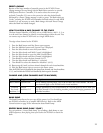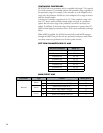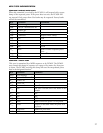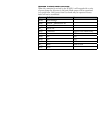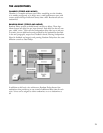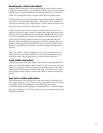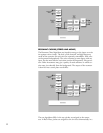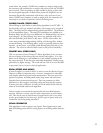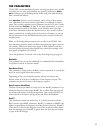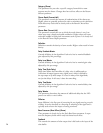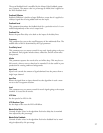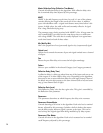31
RANdoM hALL (SteReo ANd MoNo)
Random Hall is a hall effect with gradual build-up, well suited to complex
sounds like orchestral music. Its reverberators change over time in controlled
random ways to avoid the buildup of tinny, grainy, metallic, or other color-
ations. The modulation can be noticeable and is often a desirable effect.
The early reflections are user adjustable in amplitude and delay. Some skill
is needed to set useful reflection patterns. The pattern can be expanded or
contracted in time using the “Delay Master” control, and the overall level of
the pattern can be set with the “Early Level” control.
A hall is the principal venue for classical ensembles, but has proven to be
useful for all types of music. A hall is comparatively large, with wall-to-wall
distances that are typically several tens of meters. Smaller halls may be used
for smaller ensembles. The characteristic sound of a hall includes very low
initial reflection density, with little reflection energy before 60-100 mil-
liseconds. Density buildup is more gradual, because of the larger distances
between reflecting surfaces. Reverberation time is somewhat longer as well.
Finally, in most halls lower frequencies reverberate longer than higher fre-
quencies.
One of its charms is a bit of irregularity in the decay. In some cases (very
small rooms with precisely-pitched instruments), this modulation may not
be the best choice. But in general, this is a time-tested reverberator.
PLAte (SteReo ANd MoNo)
The Plate programs mimic the sounds of metal plates, with high initial dif-
fusion and a relatively bright, colored sound. For this reason, they are good
choices for percussion. They are designed to be heard as part of the music,
mellowing and thickening the initial sound itself. The Plate sound is what
many people associate with the word reverb, and it is useful for all popular
music.
dUAL deLAy (SteReo ANd MoNo)
Dual Delay feature two delay lines for each input channel. Each delay line
has a single output or “voice.” Each voice has independent delay time (up to
2 seconds), output level, feedback control, filtering, and panning.
The feedback path includes highpass and lowpass filters. In addition to this
basic voice architecture, Dual Delays feature parameters that provide expand-
ed diffusion controls.



